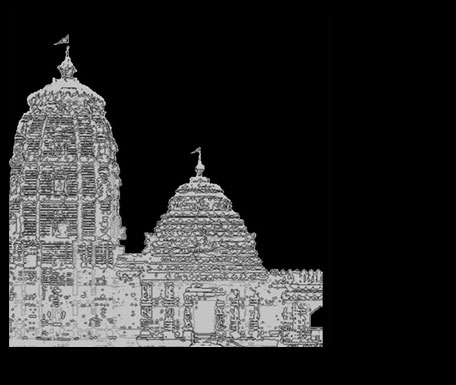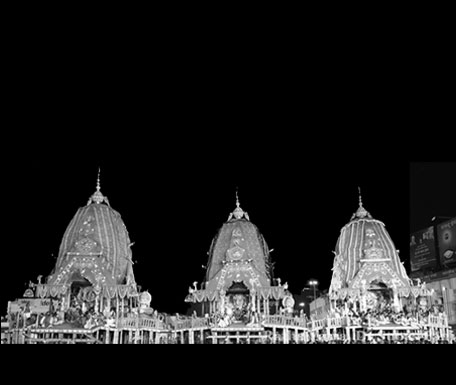





The most significant celebrations of Lord Jagannath- the Lord of the Universe is the Ratha Yatra- the chariot festival. The festival is celebrated on Second day (Dwitiya) of Suklapakshya bright fortnight of Ashada masa (3rd month in Lunar calendar) of the year.
The triad Lord Jagannath, Balabhadra and Subhadra come out from the sanctum of the temple once in a year and travel to Gundicha temple in richly decorated wooden chariots resembling temple structure giving Darshan to devotees irrespective their caste, creed and religion.
Rath Yatra the grandest festival of the Supreme divinity who has manifested in Kaliyuga to emancipate humanity and to relieve them from their suffering is very auspicious. Glimpse of the Lord Jagannath on the chariot triggers Bhakti and gives unspeakable feelings. The sanctity is such that the touch of the chariot, the ropes of the chariot are enough to confer the results of the several pious deeds or penance for ages. God comes out from the sanctum during Rath Yatra only for redeeming the fallen and wipes out all sins of his devotees even if they are unpardonable.
It is believed that the glimpse of the vaman, the dwarf form an incarnation of Jagannath is sure to ensure emancipation and release from cycle of birth and rebirth (Mokshya) and therefore said "Rathe tu vamanam drishtavapurarjanamam na vidyate."
The chariot of Lord Jagannath is wrapped in Red and Yellow colour clothes is known as Nandi Ghosha or Garudadwaja, the chariot of Balabhadra wrapped in Red and Bluish green colour cloth is TALADWAJA and the chariot of Subhadra wrapped in Red and Black colour cloth is Padmadwaja or Dwarpadalana (trumpler of pride). Around each of the chariot are nine Parsva Devatas.
Lakhs of devotees pull the chariot with utmost devotion and experience the divine. The triad after a nine days sojourn at Gundicha temple returns in a majestic procession called "Bahuda Jatra" to enter the sanctum again to be back in the midst of devotees the very next year.